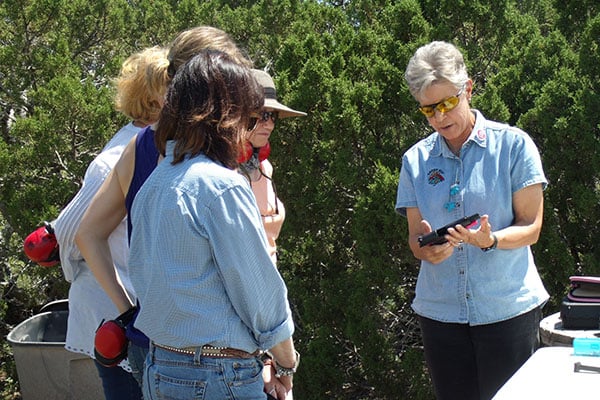
Last Updated on
I believe in training, but only if it’s the right training. If you buy a car you should know how to drive, understanding what you can and cannot do. If you are a contractor you should know how to build, so that what you build is within required specifications. If you own a firearm, you should know how to shoot and understand your legal responsibilities. The Right Firearms Training for A Woman is dependent upon the type of class offered and the training it provides.
Training Classes
Take a class before you purchase a firearm, just as you would get a driver’s license before the car or a contractor’s license before you build. With the knowledge gained by firearms training, you’re able to select what is best for you. This is not always the case with women who receive the firearm as a gift. Many women don’t even bother to get take a class because their husband, significant other or neighbor volunteer to show them how to shoot. While this is nice of them, a structured class would be a better selection.
1. Instructor’s Credentials
Check on the instructor’s education, personal experiences and ambitions. They should have certifications in what they’re instructing, and they should continue their education periodically to stay updated with current information. A public speaking course and experience teaching helps to develop the language and presence necessary to communicate adequately. What you learn should be relevant to what you need. If there’s a website, check it out and read evaluations from other students. If the lead instructor uses assistants, check the assistant’s qualifications as well. Do they really know what is being taught? They need to follow a lesson plan to assure all the basics are covered. You’ve paid to be trained by the lead instructor, not to be a guinea pig for the surrogate.
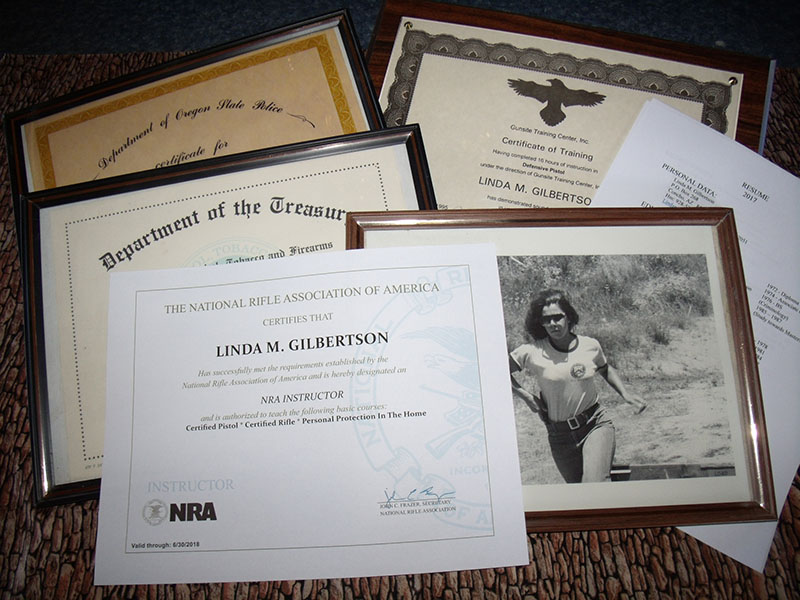
2. The Cost
The cost of the class should include written material and it should be backed up with tactile experience. Otherwise, there is little connection between knowledge and application. If the instructor provides the guns and ammo, this is an all-inclusive experience. Many women are audible learners, and they don’t need to read or touch anything. Others are strictly tactile and won’t understand what you say or what they read until they’ve touched and experienced the item being discussed. Having audible, visual and tactile experience in the class and on the range will go a lot further to cement the knowledge.
For those instructors that don’t provide firearms and ammunition for you as part of the cost, beware of the small print. For an extra cost, they’ll provide firearms and ammunition. Suddenly, a reasonable cost to you has sky-rocketed beyond your means. Some classes require you to provide your own firearm and ammunition, which is fine if the firearm you bring to the class is one chosen by you. Your husband may have purchased what he liked or felt you could handle and presented it as a gift. His heart may have been in the right place but, it may not have been your choice or what fit you. In this situation, I would recommend renting a pistol if such is available in the class. This is perhaps better than spending money on something you may not be comfortable with. When you walk out of the training you should say: “Wow, that was worth every penny?”
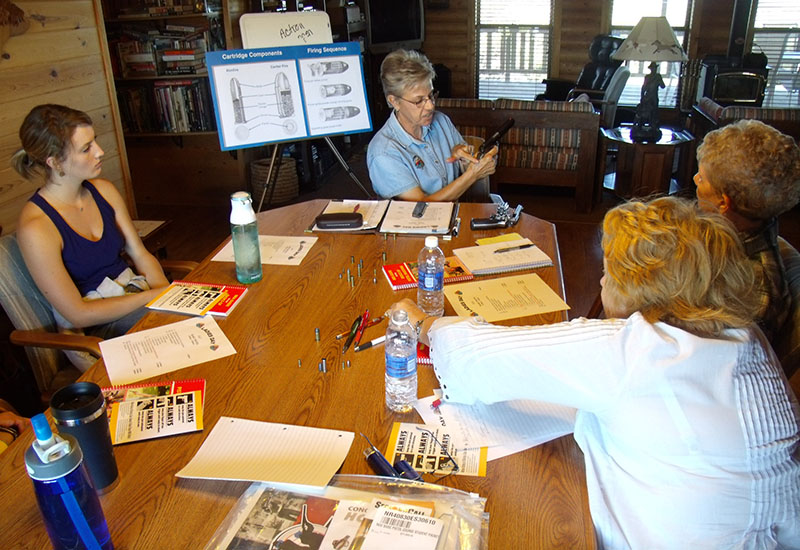
3. Instructor to Student Ratio
The bigger the class, the less time spent with you. A smaller class size will allow better interaction with the instructor during the class and afterward when you fine-tune your abilities. For women, a small class will insure that the instructor has time to help with grip, sights, breathing and stance. The instructor should help you with a firearm purchase and some practice with your new firearm. The instruction should offer other courses to help you advance towards additional shooting opportunities. Some instructors travel around the country and may have their home office in another state. Once you take their class, are they willing to continue your relationship beyond the classroom? If once you leave the class, you never see or hear from the instructor again, you may want to rethink your choice.
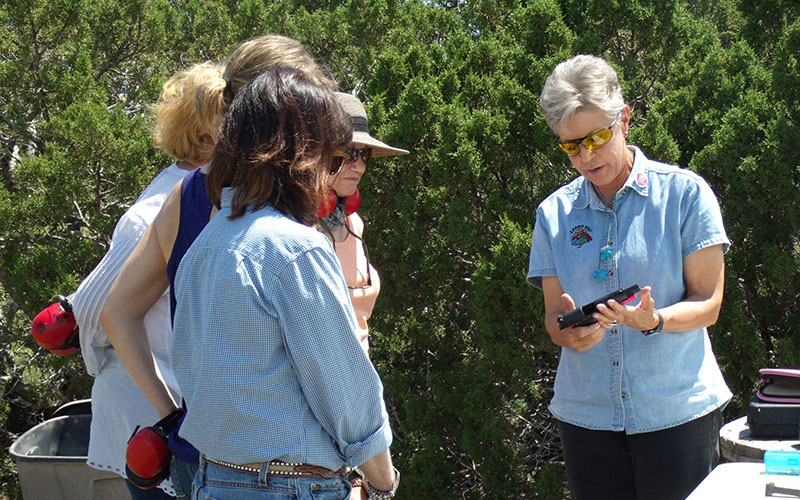
4. Classroom and Range Facilities
Comfort is important to women and having a bathroom with running water and flush toilets is part of that comfort. A climate controlled classroom with adequate lighting, tables and comfortable chairs, and a TV/DVD combo will make learning more enjoyable. A shooting range, whether indoors or outdoors, with adequate space and ventilation for accomplishing basic and advanced instruction is a must.
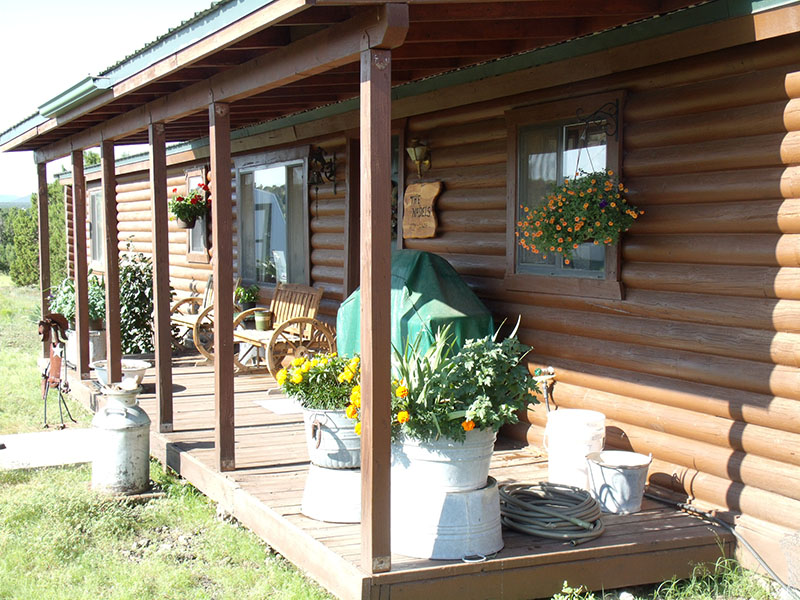
Type Of Training
Now that you’ve chosen the right class, what type of training do you want to have.
1. Ammunition
A basic pistol class should fire between 50 to 100 rounds of practice ammunition. For a new shooter, the firing of more ammo than this amount is a good way to practice a bad habit and create shooting fatigue. After a while, rather than concentrating on the basics, the shooter is just “polishing the bore” and spending a lot of money on ammunition just to get through the course.
A good instructor will listen carefully to what the women are saying while they’re shooting, observe their body language and shot pattern to determine exhaustion. Based on this observation, call a cease fire to allow the student to rest and regroup, to correct any issue and refocus. The women will tell you if they’ve had enough. I certainly take them at their word because my goal is to help them love what they’re doing, not waste their time by wasting ammo. I want them to leave the class wanting to come back and shoot some more. An hour of shooting in the morning and an hour in the afternoon is more than enough for the beginning shooter. Fatigue will have set in after the second hour and that’s the wrong time to continue.
After they’ve completed the class and when they’re ready, I offer to go shopping with them for a pistol. Once a pistol is purchased the student meets with me at the range for some one-on-one. If she likes her pistol and has a good handle on the basics, she’s off to practice on her own to perfect that which she’s learned. When she’s ready she’ll go to the next level which may include an advanced class where more ammunition is fired.
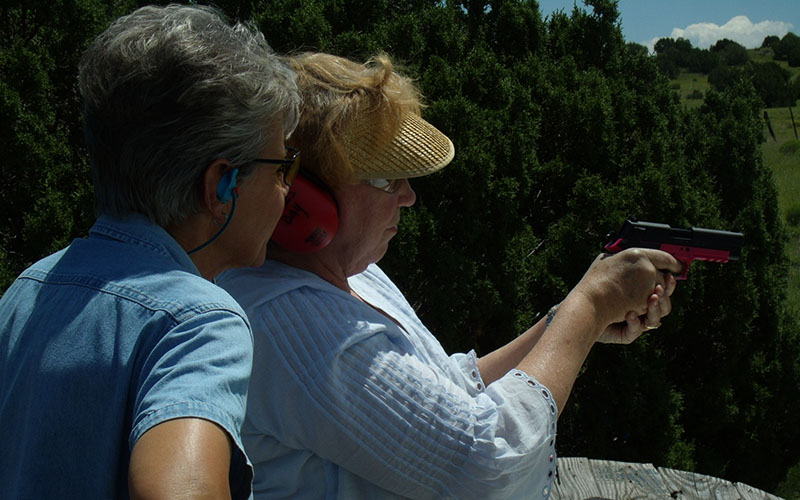
2. Target Distance
The new shooter’s target should be at 7 yards or less. At this distance, she can see the target clearly, properly align her sights on the target and this distance is a better representation of the distance she may confront in a personal protection scenario. A plain piece of paper (8 1/2X11”) without any indication of a bullseye, will remove the bullseye fixation and allow the student to utilize sight alignment and trigger control to hit anywhere on that piece of paper. As the shooter perfects sight alignment and trigger control, she can pick a spot on the paper and attempt to aim at that location. When she’s ready a humanoid target can be substituted to represent a sense of reality.
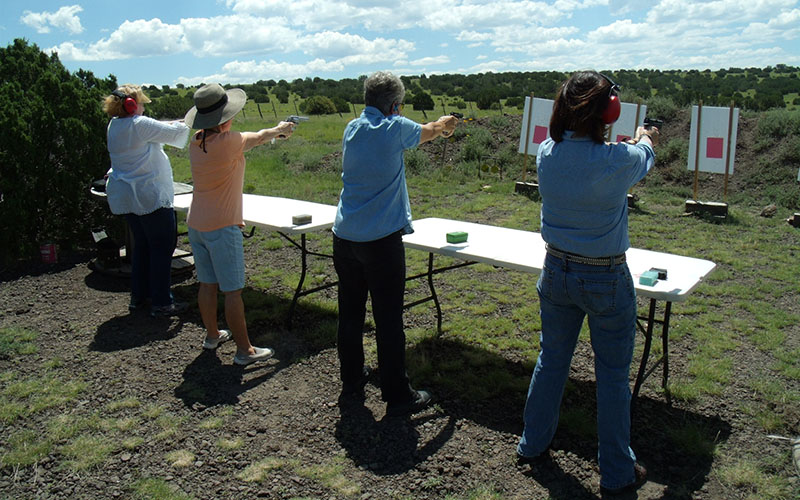
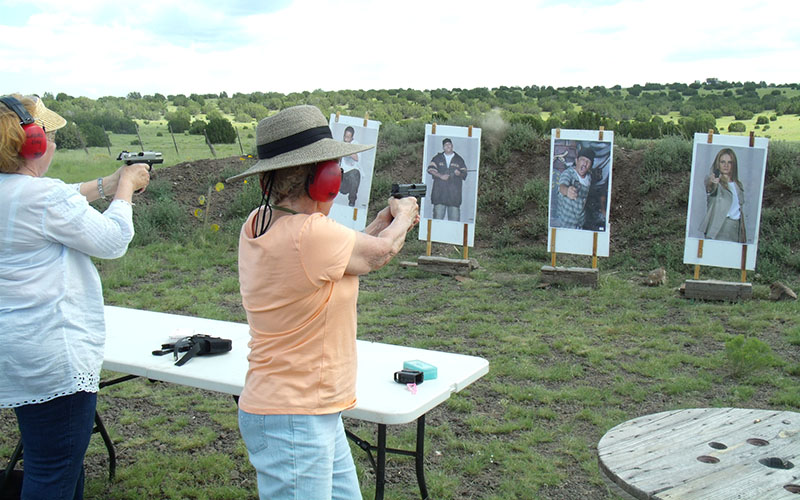
Some instructors place the target as far as 25’ away from the shooter. As the target diminishes in size, so does the area which represents “Center of Mass” or in personal protection jargon, the body of the perpetrator. It requires more time on the part of the student to line up the sights and dependent upon the distance of the target, the interference of gravity and friction on the bullet may affect impact at a location different from the aim. The frustration becomes evident when she says: “That’s not where I was aiming.” Bring the target closer to her, a reasonable distance, and the hit count will increase and so will her satisfaction. She will thank you for not making this more difficult than it needs to be. Distance is something to be played with once the basics are perfected at a closer distance.
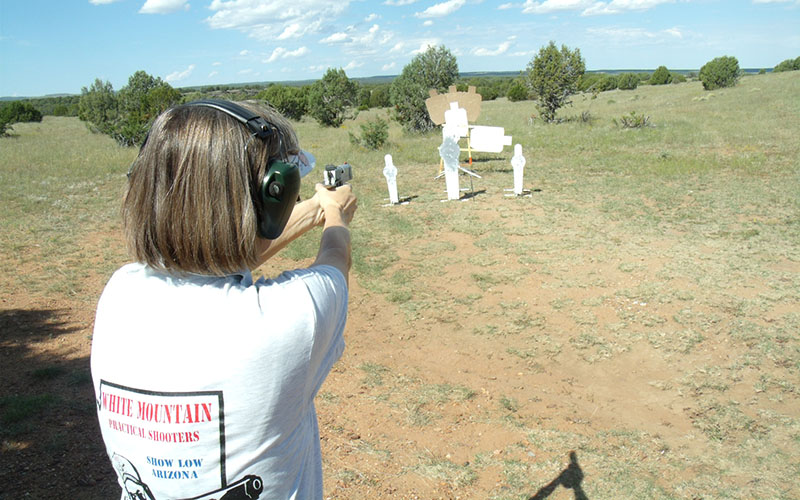
3. Target Choice
Dependent upon where you live, your choice of target may be dictated for you. You may be limited to the Classic Bullseye or the headless IPSC Target called the Classic. Wherever you are located, try to pick a target that will give the best representation of the threat that may be faced by the student. Experiments in police training have found that if police train on something other than humanoid targets, when a human threat presents itself, officers have hesitated in their response.
As I indicated earlier, my students start with a blank 8 ½ X 11” piece of paper. The purpose is to allow them the opportunity to perfect sight alignment and trigger control without the distraction of circles or objects. Once they’re comfortable with the firearm and have the basics in hand, I switch them to a humanoid paper target. The placement of the blank piece of paper, is visually transferred to the “Center of Mass” on the humanoid target. The success rate of hits on the target increases when the student is inspired based upon the threat perceived.
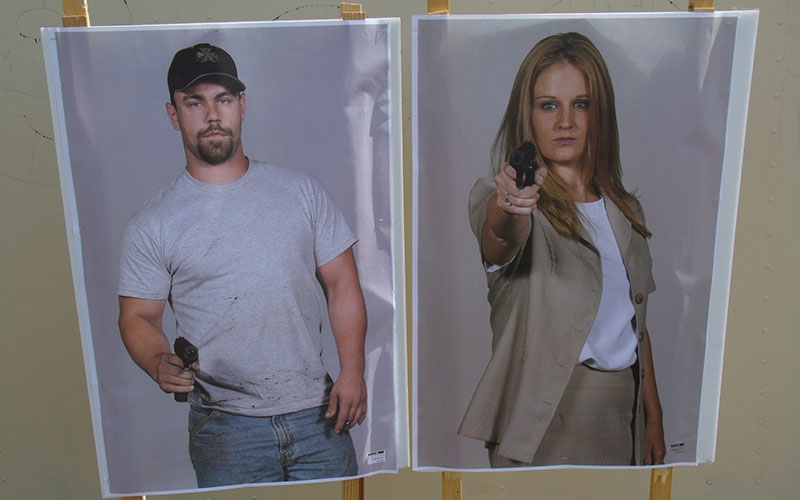
4. Training Pace
Some instructors ask for judgement calls without the student perfecting confidence in her firearms handling ability. Many women are fearful of this and burn out quickly from the rigor of the training. Their interest is in personal protection, not scaling walls, house-clearing or chasing the perpetrators through neighborhoods. They become frustrated with the failure to successfully solve the problem. This type of training is best for an Advanced Student who has perfected the basics and is ready for the challenge.
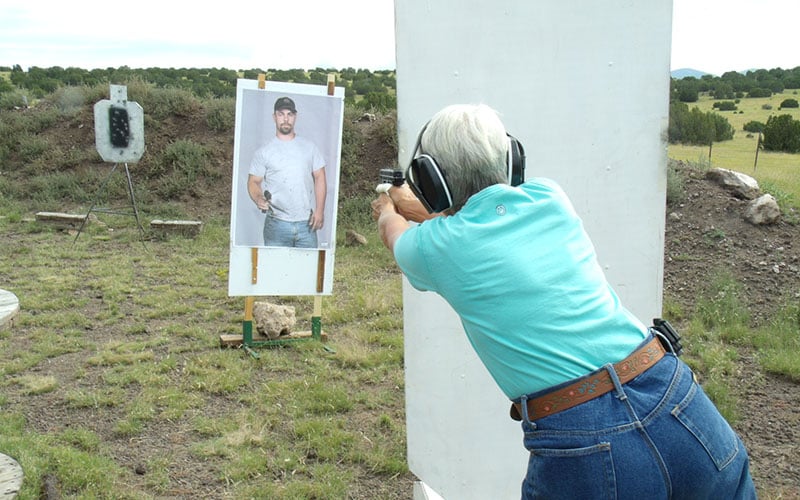
Remember, these women are not police officers or police or military “wanna-bes.” They are homemakers, professional women, students, retired or recently divorced or widowed. In some states, the laws govern personal protection and frown on house-clearing or chasing the perpetrators by private citizens.
The Right Training for A Woman takes these eight items into consideration and gives her confidence and competence in basic firearms and her personal protection. Treat her right and she’ll become “hooked” and will want to learn much more. Treat her right and she’ll become a shooting partner and a firearms advocate.




Leave a Reply